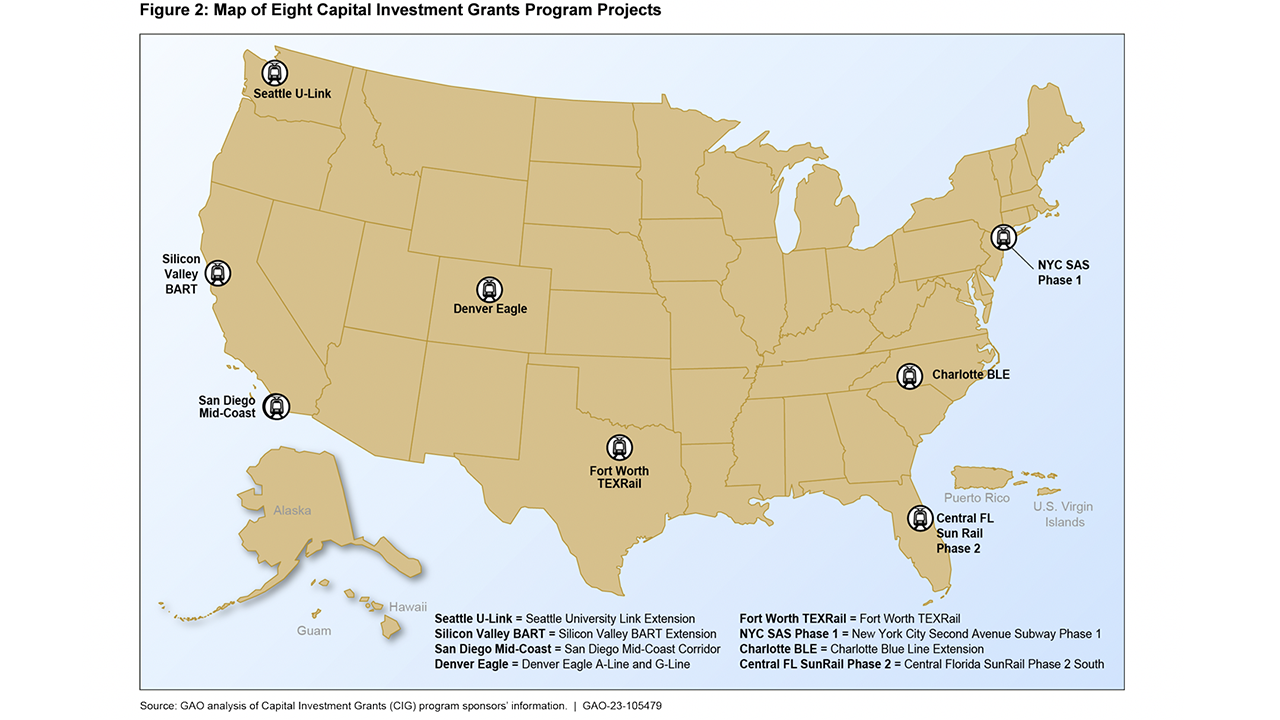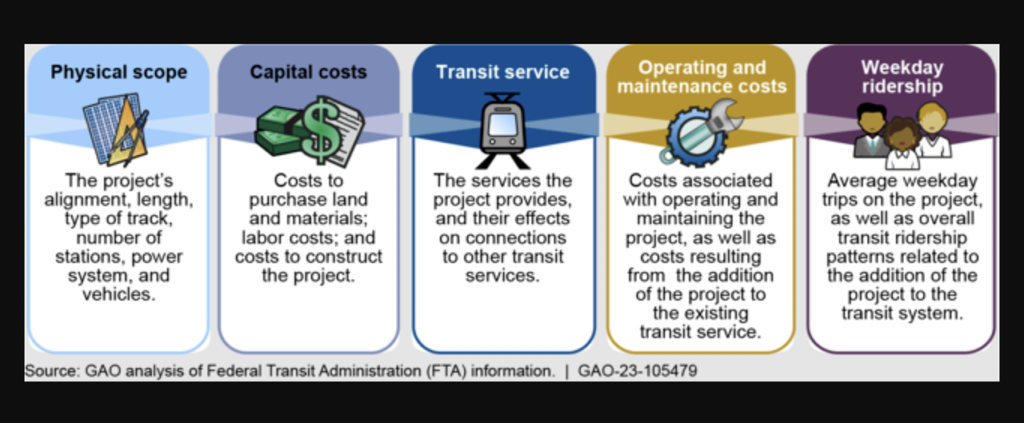
Pandemic Complicates Transit Project Ridership Predictions, GAO
Written by Marybeth Luczak, Executive Editor
GAO reviewed eight projects funded by FTA’s Capital Investment Grants program. Two reported that actual ridership was about 30% lower than predicted “due to overly optimistic travel model assumptions.” According to all eight project sponsors, “transit ridership declined precipitously at the start of the pandemic. In most cases, recovery has been slow. Sponsors said they expect ridership to continue to be lower than pre-pandemic levels, given the current trend of remote work.”
For projects funded through the Federal Transit Administration’s (FTA) Capital Investment Grants program, predicting ridership has been complicated by the COVID-19 pandemic, according to the U.S. Government Accountability Office (GAO).
GAO on April 10 released a report (download below) reviewing the FTA’s implementation of the Capital Investment Grants program, which it is charged to do biennially under the Infrastructure Investment and Jobs Act. The program supports rapid transit and light rail, commuter rail, streetcar, ferry, and bus rapid transit projects that are locally planned, implemented and operated. Project sponsors that apply for grant funding develop capital cost and ridership predictions, and later, FTA uses these predictions to help determine whether the projects have delivered expected outcomes, according to GAO. For that reason, “it is important that project sponsors predict these outcomes as accurately as possible,” GAO reported.
According to GAO, FTA assesses the outcomes of projects in periodic Predicted vs. Actual reports. FTA has issued four such reports, examining projects that began operations from 1983 through 2015. To develop these reports, FTA used information on five types of project outcomes discussed in “Before and After” studies that project sponsors conduct (see figure below). In the reports, FTA compared completed projects’ actual capital costs and ridership with the outcomes project sponsors predicted. FTA’s 2020 report showed that about 86% of the projects discussed had actual capital costs within 10% of predicted costs, but only 48% of the projects had actual ridership within 20% of predicted ridership, according to GAO.

“FTA has developed some methods to help project sponsors more accurately predict capital costs and ridership,” GAO reported. “For example, FTA conducts risk assessments to determine the probability that various factors will affect the project’s costs, and project sponsors use this information to modify cost estimates. FTA also has developed an alternative approach to predicting ridership that enables project sponsors to use existing sources of data to quickly develop ridership forecasts.”
GAO reviewed eight projects—from central Florida, Charlotte, Denver, Fort Worth, New York, San Diego, Seattle, and the Silicon Valley (see map, at top)—and found that two sponsors completed a Before and After study and reported that actual ridership was about 30% lower than predicted “due to overly optimistic travel model assumptions.” According to all eight project sponsors, GAO said, “transit ridership declined precipitously at the start of the pandemic. In most cases, recovery has been slow. Sponsors said they expect ridership to continue to be lower than pre-pandemic levels, given the current trend of remote work.”
GAO concluded that the “significant impact of the pandemic complicates assessments of the accuracy of sponsors’ pre-pandemic ridership predictions.”



